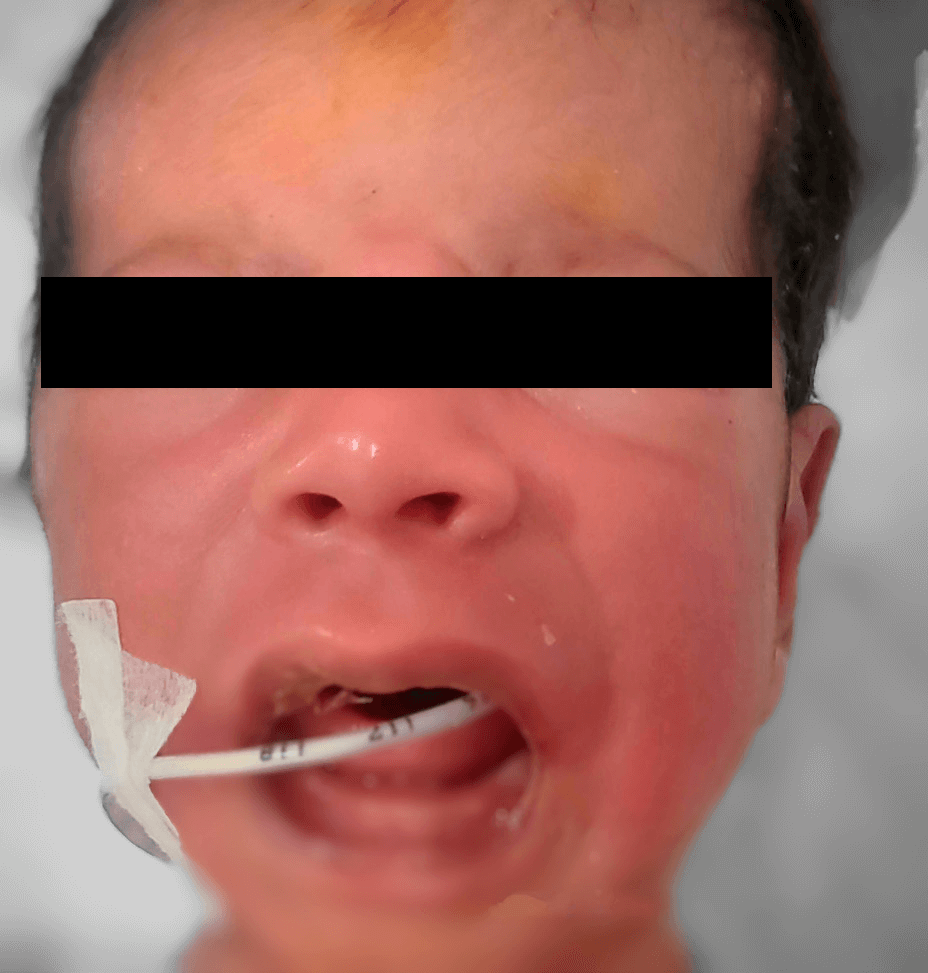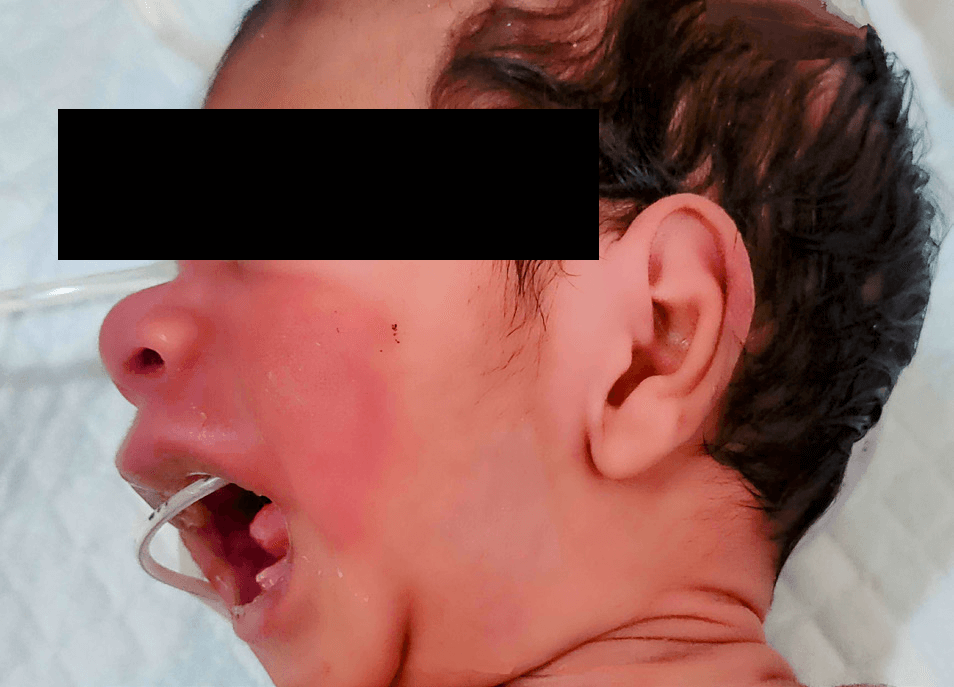Senthil Kumar Arumugam
Consultant Neonatologist, Ramalingam Hospital, Salem, Tamilnadu, India
Address for Correspondence: Senthil Kumar Arumugam, 960, Industrial Estate, K.N.colony, Salem, Tamilnadu, India PIN-636014.
Email: drsenthil_salem@yahoo.com
|
Question :An 18-day old male neonate presented with fever, lethargy and poor feeding for a day. He was born by caesarean section with indication being non-progression of labour with birth weight of 2.9 kg. There was a history of bad child rearing practices like oil instillation through nose and cow's milk feeding. He had weight loss of 12% from birth weight, with mild tachypnoea and poor perfusion at admission. He had history of mosquito bite over nose following which redness spread over cheeks.
On examination, he had erythematous, indurated swelling over nose and both cheeks with raised margins.
Laboratory investigation showed leucocyte count of 12,120 cells/cu mm, 84% neutrophil, 12% lymphocyte, 4% monocyte, hemoglobin of 13.8 g/dl, platelet count of 4.4 Lakh/cu mm. C-reactive protein of 25 mg/L. Electrolytes were normal. Blood culture grew streptococcus pyogenes sensitive to ampicillin, penicillin, cefotaxim, vancomycin, ofloxacin and resistant to erythromycin and clindamycin. He received saline boluses and inotropic support at admission. He had thick oral secretions which improved with nebulisation. He had fever spikes for one day. He received injection meropenam and injection vancomycin for 2 days, which was changed to injection ampicillin and given it for 7 days.
Figure 1. Erythematous rash over cheeks and nose in a neonate side view.
 Figure 2.
Figure 2. Erythematous face over nose and cheeks, front view.  What is the diagnosis?
|
Discussion :
Erysipelas is the bacterial skin infection involving upper dermis and superficial cutaneous lymphatics, usually caused by group A beta-hemolytic streptococci (streptococcus pyogenes) and occasionally by group B, C and G streptococcus. 1 The other rare organisms that cause erysipelas are Staphylococcus aureus, Streptococcus pneumoniae, Klebsiella pneumoniae, Yersina enterocoliticia and Hemophillus influenza. 2
The portal of entry of the organism is through a breech in skin barrier by trauma such as insect bite, ulceration or surgical incision. The usual site of entry of organism in neonates are umbilical cord and vaccination site. 3
In children it usually involves the face, leg and hand. It has a characteristic central face distribution affecting both cheeks and nose. 4 It is bright red, indurated swelling with raised border. Neonates present more commonly with redness around the umbilicus. The symptoms are usually abrupt in onset with fever and chills.
The clinical features that differentiate from cellulitis are the raised advancing edge and distinct border. In cellulitis the margins are not defined.
If not treated, it may go for complications like necrotizing fascists, septicaemia, infective endocarditis, septic arthritis and meningitis. Poststreptococcal glomerulonephritis is also a complication seen in children. 4,5
Intravenous penicillin is the antibiotic of choice.
Our case presented with redness following insect bite, with blood culture positive for streptococcus pyogenes. He improved with injection ampicillin for 7 days. Recognition of erysipelas will help us to choose the appropriate antibiotic. | References : | - Bläckberg,A., Trell, K., RasmussenM. Erysipelas, a large retrospective study of aetiology and clinical presentation. BMC Infect Dis 15, 402 (2015).
- Chartier C, Grosshans E. Erysipelas: an update. Int J Dermatol 1996;35:779-81.
- Michael Y, Shaukat NM. Erysipelas. [Updated 2022 Aug 8]. In: StatPearls [Internet]. Treasure Island (FL): StatPearls Publishing; 2023 Jan-.
- Celestin R, Brown J, Kihiczak G,et al. Erysipelas: a common potentially dangerous infection. Acta Dermatovenerol Alp Pannonica Adriat. 2007;16(3):123-7.
- Dr Amy Stanway, Dermatology Registrar, Waikato Hospital, Hamilton, New Zealand, 2001. Reviewed and updated by Dr Amanda Oakley Dermatologist, Hamilton, New Zealand; Vanessa Ngan, Staff Writer, June 2014. Further updated by Dr Jannet Gomez, Postgraduate Student in Clinical Dermatology, Queen Mary University, London, United Kingdom, February 2016. Dermnet.
|
|
| Correct Answers : |  100% 100% |
Last Shown : Dec 2024
|